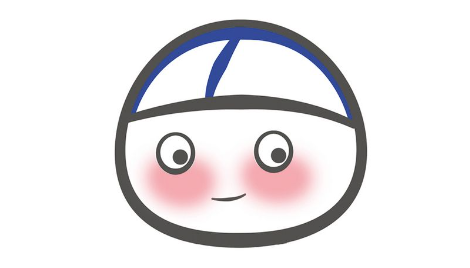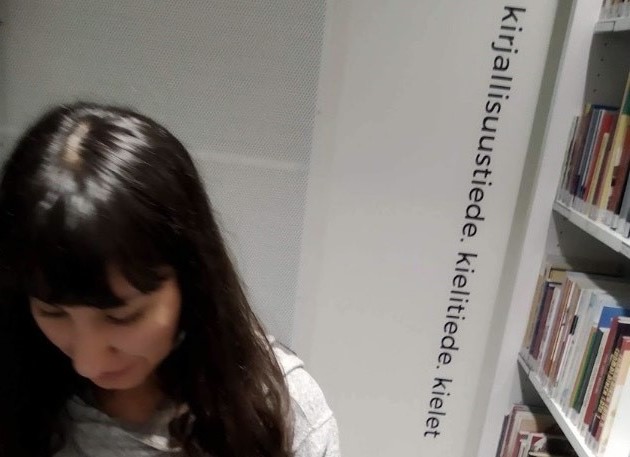Learning Finnish as a foreign language – can it be easier than you think?
Are you someone who thinks that Finnish is impossibly hard to learn? Are you someone who hesitates to study this beautiful language? Or are you just someone who likes reading about languages? Learn more to see the fun aspects and tools which make Finnish an easy language to learn.
There is a restaurant called Kuusi Palaa in Helsinki, butin Finnish kuusi palaa is more than an innocent restaurant name. In fact, it can have 9 different meanings, and let’s admit it: The Finnish language can get tricky to learn (I hear you saying “Sanopa muuta!”). It is listed as one of the most difficult languages to learn, and I think we have read and heard enough about the whys. I beg to differ and want to talk about why Finnish is easy to learn.
My name is Selcen Erten, and I am a PhD researcher at the University of Turku. I am a Turkish native speaker, come from a linguistics background and have studied several languages (also taught two of them) so far. I have been studying Finnish for 2 years now, and I am loving it! In the rest of this blog, I will talk about the aspects which make Finnish easy to learn.
Here we go! Yy-kaa-koo!
1. Finnish is a phonetic language.
It means that Finnish pronunciation follows the written form, and each letter corresponds to a sound. Once you figure out how it works, there are no exceptions! This is convenient for learning a language. For Finnish, this convenience does not stop there: Stress is also quite easy to grasp, because the stress on Finnish words is always on the first syllable with few exceptions. So, even 61-letter words like Lentokonesuihkuturbiinimoottoriapumekaanikkoaliupseerioppilas (technical warrant officer trainee specialised in aircraft jet engines) cannot scare you. Just remember that there is a one-to-one letter-sound correspondence, and the stress is on the first syllable. Easy peasy!
2. There is vowel harmony in Finnish.
Vowel harmony is the rule that does not permit both front vowels (ä, ö, y, e, i) and back vowels (a, o, u) to appear in the same word. The only exception is front vowels i and e. They can appear in the same word with vowels of both groups. Vowel harmony in Finnish is another aspect which makes your learning easier because you can easily guess which suffixes come to the end of the words. Your guess will be shaped by the rule.
3. Rules of Finnish grammar are logical and consistent.
Well, it is no secret that Finnish grammar is complex, and one of the most notorious examples of it is the number of cases. Rumours about the numbers of cases in Finnish – being 14 – are true enough. Looking at the bright side though, when you follow the rules, you are safe! When you start learning Finnish, learning grammar comes in the same package almost immediately. Grammar is extra embedded in this language, and you don’t have much choice of skipping it. But good news is that you don’t need to learn it all at once. It comes cumulatively. Also, continuing learning the bits of grammar pays off your study time greatly. Hei, suomi ei ole vaikeaa, jos osaa pari sääntöä, vai mitä?
4. There are no articles and grammatical genders in Finnish.
The fact that there are no grammatical genders in a languagemeansthat distinction between feminine and masculine does not exist. Moreover, there are no articles in Finnish. You might wonder how no article situation affects clarification in the context. Well, there are other ways to specify definiteness and indefiniteness. Cases come for help, as one thing (Hey, learning the bits of grammar has already started paying off!). So, if you ever studied any language having articles and genders, you know how complex it makes things. But Finnish is free of them. Another easy aspect in learning Finnish, wouldn’t you agree?
5. There is no future tense in Finnish.
Of course, this does not mean we cannot talk about the future time in Finnish. It just means that there are other ways to express the future concept. In Finnish, future time is usually indicated with the present tense. If you wonder how to make a difference between two sentences indicating present tense and future tense, it can always be done with the hints the context gives. But there are obvious ways as well: Time adverbials such as huomenna, ensi viikolla and ensi vuonna can be used in the sentence to express future tense. Another way is with objects. A life-saving rule can be that the genitive case of the noun refers to the future nature of the verb as in Katsomme elokuvan kotona instead of Katsomme elokuvaa kotona. No future tense you need to specifically learn. Instead, it is expressed around the rules you already know or will learn soon. Isn’t it nice?
6. A lot of Finnish surnames are nature words.
I find this aspect of Finnish language fun and easy. You must have heard or seen many surnames like Aaltonen (aalto: wave), Järvi (lake) or Järvinen, Koivu (birch tree) or Koivunen, Lahti (bay) or Lahtinen, Mäkelä or Mäkinen (mäki: hill), Niemi (cape) or Nieminen, Peltonen (pelto: field), Saari (island) or Saarinen, Salminen (salmi: strait), Virtanen (virta: stream). As seen, the suffix “-nen” is quite popular for Finnish surnames, so it may be a good way to identify a Finn. Even beyond that, when you hear or see these or similar surnames pretty much anywhere, you always have a chance to practice your vocabulary of nature. That is what I always do. This way I always keep these words fresh in my memory.
So, why learn Finnish?… Well, why not?
You can easily get by with English in Finland. If you are in the university environment, it is even easier. However, it is common knowledge that learning the language of the country where you live helps you experience, enjoy, and integrate more. When you learn a language, you start travelling to the heart of culture, history, literature and people of the country where that language is spoken. But if we are talking about Finnish, you might find even more reasons to learn this language, because Finnish is beauuutiful! Yeah, agreed to “Beauty is in the eye of the beholder” but the beauty of Finnish does not only come from my eyes. The beauty also comes from the fact that Finnish is a different language than commonly studied/learnt languages in the world. It would be a rare and precious opportunity to learn Finnish. So, don’t miss this chance!

The fact that you are still reading indicates that you might find the motivation to learn this beautiful language. So, I would like to share the tools which can help you not miss the chance of learning Finnish.
Tools to help learning Finnish
The Centre for Language and Communication Studies
The Centre exists at the University of Turku. It is a great community of teachers and researchers. You can find several Finnish courses guided by them. If you can, it is definitely worth taking these courses. They are very well-structured and organized. The teachers are supportive and help greatly with your learning process. The Finnish you hear in the classroom is tailored to your level, and I think it is a great opportunity in your journey of learning. One of the things I like about these courses is the abundance of speaking opportunity with peers. There is lots of pair work you do, and your peers are the people whose Finnish levels are around yours. Another thing I like is how you learn about the important days and cultural events on their actual times during the course. You would never overlook days like Vappu or Independence Day, but there are less-known dates by international students such as Finnish Literature Day which is Aleksis Kivi`s birthday (Notice the nature word kivi: rock). When you take the Finnish courses, there is no way you will let these days go unnoticed.
Tandem, Language Circle and opisto-centres
If you can’t make it to the courses at the university, you can still attend to Tandem groups and Language Circle groups organized by The Centre for Language and Communication Studies. These are rather to improve speaking skills, but if you need little pushes for other aspects of Finnish as well, you are welcome all the same. If you can’t make it to Tandem or Language Circle groups either, but think you need Finnish courses, then I could suggest checking out other course opportunities such as the ones in Turun kesäyliopisto, Turun iltalukio, Turun kristillinen opisto, Turun työväenopisto and Turun ammattikorkeakoulu. These adult education centre-type of places are for Turku area, but wherever you study or reside, you should have similar options of opisto.
Other tools which make learning Finnish even easier
There are quite a lot of tools you can benefit from when learning Finnish. One is uusikielemme website where you can find fun and useful information about almost anything in Finnish. Suomen verkkokielioppi by Aalto University is another one. You can find the videos on their website or on Youtube. I find them very useful especially when I want to clarify things about grammar topics.
Another one is Babadada visual dictionary. Babadada is not specific to Finnish, but there is a vast range of languages you can pick to pair Finnish with. If you are a visual learner like myself, Babadada is perfectly suited to improve your vocabulary. If you need help with conjugation, Cooljugator is very detailed. In terms of a good dictionary, the one I use quite often is MOT Sanakirjat, so I could suggest it.
Other tools I use a lot is selkouutiset and selkosanomat. Selko means simple and selkouutiset refers to simple news while selkosanomat is simple newspapers. These two tools are ideal if you want to improve your Finnish without missing what is happening in the country where you live and in the world. Selkouutiset has both radio and tv versions. I watch the tv version with Finnish subtitles on the bus daily. It is my little ritual. If you would like to watch videos in real-life Finnish contexts such as at school, shop, or hospital, I could suggest Suomi taskussa. They have a variety of videos under various topics and the Finnish level in each video is quite intelligible.
Last words… Tyvestä puuhun noustaan.
So, learning Finnish can really be easier than you think. One idiom to keep in mind could be Tyvestä puuhun noustaan. That’s right, a tree is climbed from the base. This Finnish tree keeps its leaves all year. While climbing this tree, don’t forget to have fun! And always remember: This is a rare and precious experience!
See Finnish as a Foreign Language courses:

